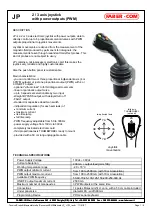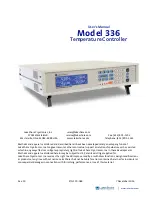
CNT-SVX04A-EN
Sequence of operation
52
occupied standby setpoints. When the controller receives a communicated
unoccupied request, the controller operates according to the unoccupied
setpoints regardless of the hardwired occupancy input state.
If neither the hardwired binary input nor a communicated request is used to
select the occupancy mode, the controller defaults to occupied mode because
the occupancy binary input (if present) typically is configured as normally open
and no occupancy device is connected.
The Tracer ZN.520 does not support
discharge temperature control.
Modulating/Cascade control
Cascade control differs from zone temperature control in that the unit controls
the discharge air temperature to control the zone. Cascade control is thereby
able to control the space temperature better than the simpler zone temperature
control, which uses only the space temperature and setpoint. The Tracer ZN.520
zone controller uses cascade control while occupied, occupied bypass, or in
occupied standby and a simplified zone control (described in the previous
Unoccupied mode
section) when unoccupied.
The cascade control algorithm uses a control error. The control error is the
difference between the measured space temperature and the active heating/
cooling setpoint (depending on the heat/cool mode). The controller uses the
control error in a proportional/integral control algorithm to produce a discharge
air temperature setpoint. The control algorithm compares the present discharge
air temperature with this setpoint and calculates a unit heat/cool capacity
accordingly. The end devices (economizer, valves, etc.) operate based on the
unit heat/cool capacity (heat or cool mode, 0 to 100%).
Figure 4
Cascade control block diagram
















































